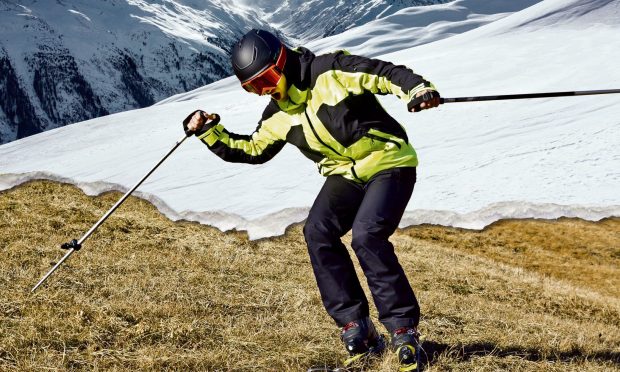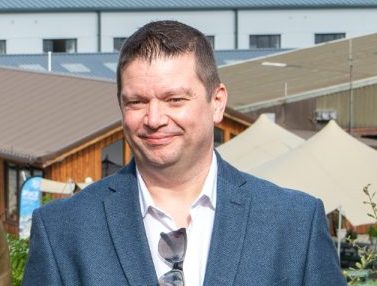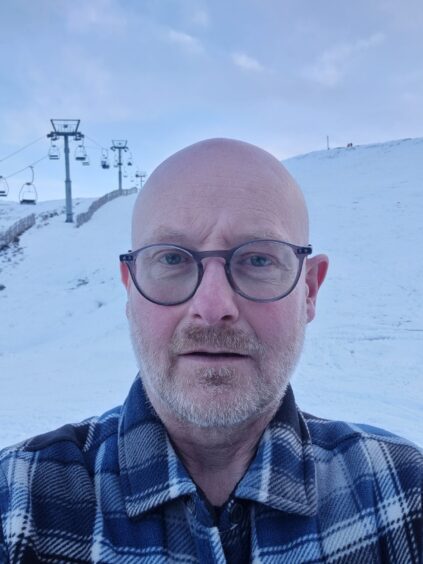
Two weeks ago, the thought of defrosting the car in the morning seemed a million miles away, with temperatures in Scotland soaring as high as 18C in a bizarre and very un-autumnal turn of events.
But last Tuesday, temperatures dropped below -10C as the country recorded its coldest early winter temperatures since 1998.
It is impossible to ignore the dramatic change in Scotland’s winters. In a report published earlier this year, the European Union’s Copernicus Climate Change Service found the vast majority of the continent experienced a well-below-average number of snow days in 2023. Globally, it was the warmest year on record.
Though the Met Office said it was scientifically impossible to predict snowfall for the coming months, a spokesperson said: “With a background warming we expect to see less extreme cold events and snow across the year in the UK. We will still get cold events but they are becoming less frequent.”
As such, ski centres across Scotland are having to think differently when planning for the years ahead. Though there has been snow across the country this past week, it far from ensures a steady snowfall for the upcoming winter.
Nevis Range
In a statement earlier this month, Nevis Range announced it won’t be starting its snowsports season until February. The statement read: “These changes aren’t about cutting back – they’re about survival.”
Chris O’Brien, managing director at Nevis Range, explained this isn’t quite as scary as it may seem.
“When we say survive, we don’t mean there’s impending doom,” said O’Brien. “We mean, if we’re not sensible, we’d be in trouble, like everyone else in this economy.”
January has always been slow, according to O’Brien. The severity of storms that have come to be synonymous with Scottish winters has meant the resort has only managed to open for snowsports one or two days in the month.
“We can’t have 120 people employed for three days’ skiing,” he said. “We made quite significant changes to snowsports last year as well. We didn’t feel comfortable selling season tickets, so instead, we sold tickets that were valid for two years so you’d have a decent shot of getting a good day.”
If there is enough snow to open earlier than February, the team will try to make it happen. Even without snowsports though, a recent £5 million development means the resort has enough to keep visitors entertained year-round, with a new hotel, restaurant and more. O’Brien said these services are enough to keep the resort “strong”. Moving forward, the key will be adapting to changing conditions. He has plans to turn part of the mountain into a dry slope.
“We’ve spent years at Nevis Range preaching the gospel on net zero and people thought we were crazy, but we have watched the snow line retreat 300 metres up the hill in 10 years. This is a real thing. Skiing will never go away, but its form will change. The denial side isn’t going to help anyone, what we have to look into is doing something different.”
Glenshee Ski Centre
Not every Scottish ski centre has other facilities to lean on when the going gets tough. Glenshee Ski Centre’s official opening date is December 21, but managing director David Farquharson said they will open earlier if possible.
“We need every penny we can get, so we open when snow is on the ground,” he explained.
If that doesn’t happen naturally, the centre uses its SnowFactory and canons to make it happen.
Farquharson said: “We can put artificial snow on a couple of our beginner slopes and on our intermediate one. Snow cannons make a lot more snow, but it tends to melt quicker. The SnowFactory doesn’t make as much but it lasts longer.”
There was only a dusting of snow over Glenshee last week, not enough to start the snowsports season early. If an unexpected dumping were to hit though, Farquharson said the team would “come up with something” to open as soon as possible.
“There is obviously a change in the weather patterns, we probably get as much snow now as we did, but with such variable temperatures. We’re getting the extremes, that’s what they say about climate change and that’s what we’re seeing here. But we are quite confident that skiing will continue in Scotland for the foreseeable future.”
The Lecht
Off the back of a difficult snowsports season last year, the team at The Lecht ski centre has spent the warmer months preparing themselves as best they can for whatever this winter might have in store. They hope to open seven days a week from December 14.
“We have very much spent the first half of the year trying to survive,” said Iain du Pon, managing director at The Lecht.
“Even with such a poor season, we still managed to put 6,000 children onto the slopes and through lessons. Earlier this year we launched our successful crowdfunding campaign to allow us to continue. We are very much going into this season full on and aiming to make the very best of what Scottish snowsports have to offer.”
Cairngorm Mountain
Cairngorm Mountain also had a difficult snowsports season last year, plagued by the ongoing difficulties with the funicular railway. But head of technical operations Colin Matthew said the team is currently feeling “upbeat” about this and will welcome skiers from December 20.
“All our surface ski lifts have been checked, maintained and will be ready when the ski season starts,” he added. “The winters can be very fickle and unpredictable, but we will always be focused on snowsports in the winter months. We are expecting to operate our Mountain Railway for the ski season. We are waiting on the contractors completing their repairs to the viaduct structure.”
The skiers
Though the ski centres might be feeling hopeful as the cold draws in, what about the skiers themselves?
Patrick Thorne, also knows as The SnowHunter, is the editor of InTheSnow magazine, the UK’s most-read ski publication in print and online.
“Sadly, the past few years have certainly been poor for most areas in terms of reliable snow cover,” he said. “Big falls have often been followed by a rapid temperature rise wiping out the gains. Ironically one of the best winters of recent years came when Covid restrictions closed the slopes when the snow was lying deep.”
He added that Scotland isn’t alone in being stuck in “a vicious circle of offering less skiing due to climate change but having to charge more for access to what they can offer” – this is the case across the globe. However, he noted the fact that four of Scotland’s five ski centres use TechnoAlpin’s SnowFactory all-weather snowmaking systems helps keep them afloat. Diversifying their offering is also necessary to adapt to the challenges which will inevitably continue.
“Most of the Scottish centres are clearly trying very hard to adapt to the changes,” said Patrick. “In the 40 years I’ve been following them, I’ve always admired their ability to cope with the challenges of Scottish weather. I remember skiing at The Lecht on Halloween one year when there had been a good early snowfall. They open when the snow is good and likewise Scottish skiers are wise to follow conditions and be ready to get to the hill whenever they’re ready.”

Enjoy the convenience of having The Sunday Post delivered as a digital ePaper straight to your smartphone, tablet or computer.
Subscribe for only £5.49 a month and enjoy all the benefits of the printed paper as a digital replica.
Subscribe © Supplied by Nevis Range
© Supplied by Nevis Range © Supplied
© Supplied